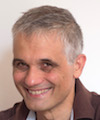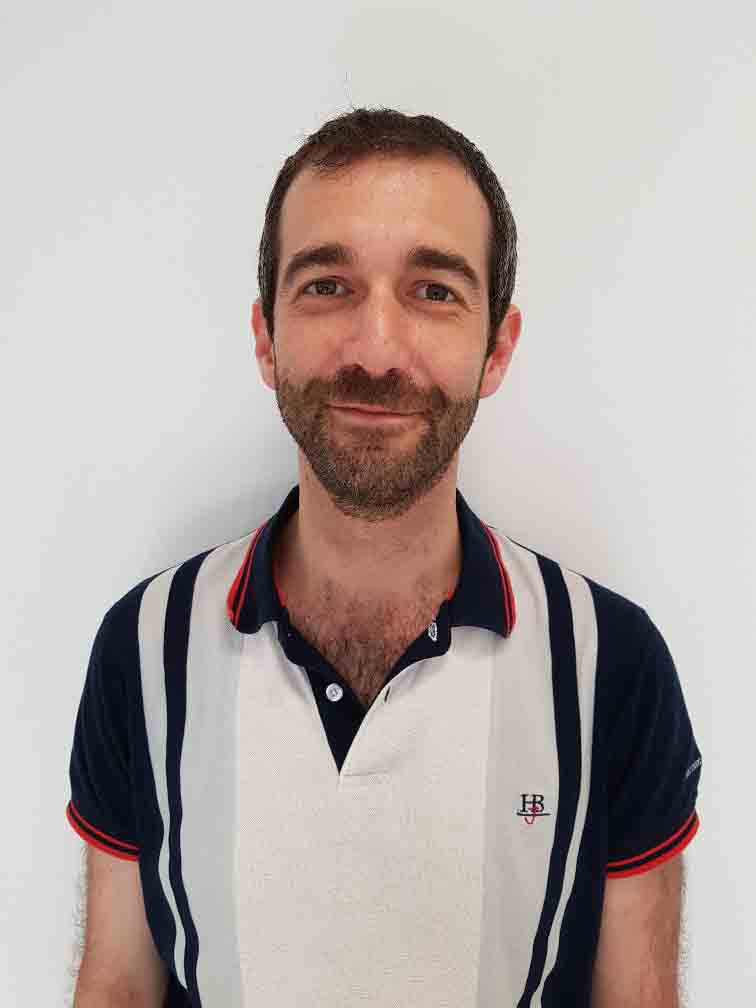Studying at the University of Verona
Here you can find information on the organisational aspects of the Programme, lecture timetables, learning activities and useful contact details for your time at the University, from enrolment to graduation.
Academic calendar
The academic calendar shows the deadlines and scheduled events that are relevant to students, teaching and technical-administrative staff of the University. Public holidays and University closures are also indicated. The academic year normally begins on 1 October each year and ends on 30 September of the following year.
Course calendar
The Academic Calendar sets out the degree programme lecture and exam timetables, as well as the relevant university closure dates..
| Period | From | To |
|---|---|---|
| INF BZ - 1° anno 1° sem | Oct 3, 2016 | Dec 23, 2016 |
| INF BZ - 3° anno 1° sem | Oct 10, 2016 | Dec 23, 2016 |
| INF BZ - 2° anno 1° sem | Oct 10, 2016 | Dec 23, 2016 |
| INF BZ - 1° anno 2° sem | Feb 1, 2017 | Apr 7, 2017 |
| INF BZ - 3° anno 2° sem | Mar 1, 2017 | Apr 13, 2017 |
| INF BZ - 2° anno 2° sem | Apr 26, 2017 | Jun 16, 2017 |
| Session | From | To |
|---|---|---|
| INF. BZ SESSIONE INVERNALE 1° - 2° ANNO | Jan 7, 2017 | Jan 31, 2017 |
| INF. BZ SESSIONE INVERNALE 3° ANNO | Feb 8, 2017 | Feb 28, 2017 |
| INF. BZ SESSIONE ESTIVA 1° ANNO (1 parte) | Apr 10, 2017 | Apr 28, 2017 |
| INF. BZ SESSIONE ESTIVA 3° ANNO (1 parte) | Apr 18, 2017 | Apr 28, 2017 |
| INF. BZ SESSIONE ESTIVA 1° ANNO (2 parte) | Jun 19, 2017 | Jul 7, 2017 |
| INF. BZ SESSIONE ESTIVA 3° ANNO (2 parte) | Jun 19, 2017 | Jul 7, 2017 |
| INF. BZ SESSIONE ESTIVA 2° ANNO | Jun 19, 2017 | Jul 7, 2017 |
| INF. BZ SESSIONE AUTUNNALE 2° ANNO | Sep 4, 2017 | Oct 6, 2017 |
| INF. BZ SESSIONE AUTUNNALE 1° ANNO | Sep 12, 2017 | Oct 6, 2017 |
| INF. BZ SESSIONE AUTUNNALE 3° ANNO | Sep 21, 2017 | Oct 20, 2017 |
| Session | From | To |
|---|---|---|
| SESSIONE AUTUNNALE | Nov 1, 2017 | Dec 31, 2017 |
| SESSIONE PRIMAVERILE | Mar 1, 2018 | Apr 30, 2018 |
| Period | From | To |
|---|---|---|
| Festa di Tutti i Santi | Nov 1, 2016 | Nov 1, 2016 |
| Festa dell'Immacolata | Dec 8, 2016 | Dec 8, 2016 |
| Vacanze Natalizie | Dec 23, 2016 | Jan 7, 2017 |
| Vacanze Pasquali | Apr 14, 2017 | Apr 18, 2017 |
| Festa della Liberazione | Apr 25, 2017 | Apr 25, 2017 |
| Festa dei Lavoratori | May 1, 2017 | May 1, 2017 |
| Festa della Repubblica | Jun 2, 2017 | Jun 2, 2017 |
| Description | Period | From | To |
|---|---|---|---|
| INF. BZ TIROCINIO 3 ANNO (1 esp.) | INF. BZ TIROCINIO 3 ANNO (1 esp.) | Jan 9, 2017 | Feb 7, 2017 |
| INF. BZ TIROCINIO 2 ANNO (1 esp.) | INF. BZ TIROCINIO 2 ANNO (1 esp.) | Feb 7, 2017 | Mar 12, 2017 |
| INF. BZ TIROCINIO 2 ANNO (2 esp.) | INF. BZ TIROCINIO 2 ANNO (2 esp.) | Mar 16, 2017 | Apr 23, 2017 |
| INF. BZ TIROCINIO 1 ANNO (1 esp.) | INF. BZ TIROCINIO 1 ANNO (1 esp.) | May 2, 2017 | Jun 9, 2017 |
| INF. BZ TIROCINIO 3 ANNO (2 esp.) | INF. BZ TIROCINIO 3 ANNO (2 esp.) | May 2, 2017 | Jun 11, 2017 |
| INF. BZ TIROCINIO 2 ANNO (3 esp.) | INF. BZ TIROCINIO 2 ANNO (3 esp.) | Jul 10, 2017 | Aug 7, 2017 |
| INF. BZ TIROCINIO 3 ANNO (3 esp.) | INF. BZ TIROCINIO 3 ANNO (3 esp.) | Aug 7, 2017 | Sep 20, 2017 |
| INF. BZ TIROCINIO 1 ANNO (2 esp.) | INF. BZ TIROCINIO 1 ANNO (2 esp.) | Aug 7, 2017 | Sep 11, 2017 |
Exam calendar
Exam dates and rounds are managed by the relevant Medicine Teaching and Student Services Unit.
To view all the exam sessions available, please use the Exam dashboard on ESSE3.
If you forgot your login details or have problems logging in, please contact the relevant IT HelpDesk, or check the login details recovery web page.
Should you have any doubts or questions, please check the Enrollment FAQs
Academic staff
Augschiller Martha
 liliana.favari@univr.it
liliana.favari@univr.it
 astrid.kustatscher@claudiana.bz.it
astrid.kustatscher@claudiana.bz.it
 sylvia.lintner@sabes.it
sylvia.lintner@sabes.it
 m.mussner@virgilio.it
m.mussner@virgilio.it
 sara.pilotto@univr.it
sara.pilotto@univr.it
 0471067355
0471067355
Scandolera Pamela
 luisa.valer@claudiana.bz.it
luisa.valer@claudiana.bz.it
Study Plan
The Study Plan includes all modules, teaching and learning activities that each student will need to undertake during their time at the University.
Please select your Study Plan based on your enrollment year.
1° Year
| Modules | Credits | TAF | SSD |
|---|
Professional Laboratories (1st year)
2° Year activated in the A.Y. 2017/2018
| Modules | Credits | TAF | SSD |
|---|
Professional Laboratories (2nd year)
3° Year activated in the A.Y. 2018/2019
| Modules | Credits | TAF | SSD |
|---|
Professional Laboratories (3rd year)
| Modules | Credits | TAF | SSD |
|---|
Professional Laboratories (1st year)
| Modules | Credits | TAF | SSD |
|---|
Professional Laboratories (2nd year)
| Modules | Credits | TAF | SSD |
|---|
Professional Laboratories (3rd year)
Legend | Type of training activity (TTA)
TAF (Type of Educational Activity) All courses and activities are classified into different types of educational activities, indicated by a letter.
Critical nursing care (2018/2019)
The teaching is organized as follows:
INFERMIERISTICA CHIRURGICA SPECIALISTICA
Credits
1
Period
INF BZ - 3° anno 1° sem
Location
BOLZANO
Academic staff
Learning outcomes
The teaching aims to study physiopathological aspects, clinical and nursing aspects in emergency situation, selected based on their epidemiological and exemplarity importance in different situations (territory, hospital, home); it focuses on risks’ individuation, on intervention’s complexity and compliance and on patient’s urgent and complex nursing need identifying the priorities.
Program
------------------------
MM: CHIRURGIA D'URGENZA
------------------------
Approach to patient with severe abdomen´s pain Acute abdomen
- intestinal infarction
- abdominale trauma with liver, spleen lesions
- pancreatitis Etiology, diagnostic and surgical approach to the patients with
- esophagu´s disease, esophagus and stomach cancer and it´s complications
- severe gastrointestinal hemorrhages
- pulmonary oncological disease
- surgical disease of the pleura (empyema)
- thoracic trauma with hemothorax and/or pneumothorax
------------------------
MM: MEDICINA D'URGENZA
------------------------
Emergency medicine in general starting from the arrival of the patient in the emergency department, organization, diagnostics, triage, different types of urgency, personal. Polytrauma, definition, clinic, guidelines, emergency room, organization, work processes, principles of ATLS Head injury, definition, epidemiology, maxillofacial anatomy and skull, pathology, symptomatology, diagnosis, treatment Respiratory failure (pulmonary edema, pulmonary embolism, chest pain, PNX, myocardial infarction, etc..), definition, anatomy, pathology, symptomatology, differential diagnosis, diagnosis, treatment. Drowning, definition, epidemiology, pathophysiology, different types of drowning, diagnosis, treatment Burns, definition, epidemiology, causes, degrees, symptoms, treatments. Principles of a hospital emergency plan.
------------------------
MM: INFERMIERISTICA CHIRURGICA SPECIALISTICA
------------------------
Educative and rehabilitative nursing approach to a patient with:
- pulmonary neoplasia and other reasons
- valve substitution
- aorto coronary bypass thoracic drainage’s management
- management of patient with blood transfusion
------------------------
MM: RIANIMAZIONE
------------------------
I) Initial measures for admission to the intensive care unit:
1) Respiratory management and emergency breathing
2) Basism monitoring and vascular access
3) Circulatory drugs and circulatory therapy
4) Monitoring of the intensive patient
II) Regulation plan in the intensive care unit:
A) Basic measures:
1) Liquid supply (Water, electrolyte and acid-base)
2) Nutrition (Parenteral and enteral nutritional therapy)
3) Stress ulcer prophylaxis
4) Thromboembolism prophylaxis
5) Remedial measures
B) Further treatment:
1) Analgesia and pain therapy
2) Ventilation, bronchoscopy and tracheotomy
3) Extended hemodynamic monitoring
4) Radiological diagnostics in the intensive patient
5) Pharmacological therapy and antibiotic therapy
6) Blood transfusion and coagulation therapy
7) Intensive care
III) Special medical conditions
1) SIRS and sepsis
2) Shock and multiorgan failure
3) Acute lung failure, ARDS
4) Abdominal disorders
5) CNS disorders
6) Dreams and accidents
7) Renal disease
8) Hereditary diseases
9) Other intensive medical pictures (E.g. HELLP, eclampsia
IV) Important intensive medical topics:
1) Infections and hygiene in the intensive care unit
2) Transport of the intensive patient
3) Brain death diagnosis and organ donation
4) Fever in the intensive patient
------------------------
MM: INFERMIERISTICA IN SITUAZIONI DI CRITICITA'
------------------------
Instability’s marker Stability resuscitation Neurology and cardiology patient’s surveillance and monitoring Surveillance and response to complex treatments Neurological function’s marker Nutritional approach to a patient with tracheostomy Hemodynamic modifications due to nursing
------------------------
MM: INFERMIERISTICA CLINICA NEI SERVIZI DI EMERGENZA
------------------------
Primary and secondary emergency patient’s evaluation; Triage; Multi traumatic patient’s approach; Haemodynamic evaluation; First intervention’s situations; Wound and tampon’s measures; Emergency system’s precepts.
Bibliography
| Author | Title | Publishing house | Year | ISBN | Notes |
|---|---|---|---|---|---|
| Hans Walter Striebel | Anästhesie Intensivmedizin und Notfallmedizin (Edizione 9) | 2016 | |||
| Larson | Anästhesie und Intensivmedizin für die Fachpflege (Edizione 9) | 2016 | |||
| Lothar Ullrich, Dietmar Stolecki | Intensivpflege und Anästhesie (Edizione 3) | Thieme | 2015 | 9783131309136 | |
| Saiani, L., Brugnolli, A. | Trattato di cure infermieristiche (Edizione 3) | Idelson-Gnocchi | 2020 | 978-88-7947-576-1 | |
| Anna Maria Ferrari, Cinzisa Barletta | MEDICINA DI EMERGENZA URGENZA (Edizione 1) | Elsevier | 2011 | ISBN 978-88-214-3074-9 | Il presente volume di Medicina di Emergenza-Urgenza, redatto dalla Faculty della Società Italiana di medicina di Emergenza-Urgenza - SIMEU, si propone come testo aggiornato, Evidence Based, per la gestione delle emergenze. Il paziente viene seguito dalla fase di allarme, sul luogo dell'evento, al trasferimento all'ospedale più appropriato fino al setting di cura definitiva, tracciando il percorso clinico assistenziale nella fase preospedaliera ed ospedaliera in continuità di soccorso. |
| Gai V. | Medicina d'urgenza: pratica e progresso II Edizione | C.G. Edizioni Medico Scientifiche, Torino | 2013 | ||
| John W. Kirklin-Brian G. Barratt-Boyes | CARDIAC SURGERY (Edizione 4) | CHURCHILL-LIVINGSTONE, 4th Edition | 2013 | ||
| Meriggi F. | Manuale di Chirurgia Generale | Selecta Medica | 2001 | ||
| Saiani Luisa-Brugnolli Anna | Trattato di cure infermieristiche (Edizione 2) | Idelson-Gnocchi | 2013 | 8879475762 |
Examination Methods
examination with 15 multiple choice questions only one answer will be correct Cut off to get a sufficient evaluation is 9/15 To pass the integrated examination of all 6 moduls, the student have to pass all 6 parts with al sufficient evaluation. If only one part results insufficient tho hole exam is to repeat. If only one part resulta insufficient with 8/15 and all other parts are positiv the group of lectures will discuss to make pass the student downregulating the votation to 3 points. If the global votation results lower than 18/30 the hole exam is to repeat
Career prospects
Module/Programme news
News for students
There you will find information, resources and services useful during your time at the University (Student’s exam record, your study plan on ESSE3, Distance Learning courses, university email account, office forms, administrative procedures, etc.). You can log into MyUnivr with your GIA login details: only in this way will you be able to receive notification of all the notices from your teachers and your secretariat via email and also via the Univr app.
Gestione carriere
Orario lezioni
COMUNICAZIONE DEL PRESIDENTE DEL COLLEGIO DIDATTICO
Carissime Studentesse,
Carissimi Studenti,
di seguito un promemoria relativo alle modalità di erogazione della didattica per il corso di studio in Infermieristica A.A. 2022/2023.
In ottemperanza alle linee guida della Commissione didattica di Ateneo, che prevedono una didattica improntata ad un pieno recupero delle modalità regolari di erogazione in presenza, la Commissione didattica del CdL nella seduta del 29 settembre 2022, ha deliberato il pieno ritorno all’utilizzo della didattica frontale in presenza.
Solo nei casi di comprovata positività al COVID-19, e/o in situazioni di particolare fragilità (sempre correlate alla pandemia) sarà previsto il collegamento sincrono in modalità streaming; a tal proposito ogni Docente, sulla propria pagina web, darà chiare indicazioni sulla modalità di fruizione della didattica.
La modalità asincrona (registrazioni delle lezioni) non è prevista.
Nell’augurarvi un buon Anno Accademico, vi saluto cordialmente
Prof. Paolo F Fabene
Guida ai programmi degli insegnamenti
La Guida ai programmi degli insegnamenti in allegato è uno strumento di sintesi e orientamento per lo studente, creato da un gruppo di lavoro interno alla Commissione didattica del CdS.
Per tutte le attvità previste dal piano di studi sono descritte: le finalità, i contenuti e integrazioni, learning outcome, i metodi di insegnamento e valutazione e bilbliografia essenziale
Documents
| Title | Info File |
|---|---|
|
|
pdf, it, 1581 KB, 11/07/24 |
Linee guida per riconoscimento cfu
Lo studente che intende chiedere il riconoscimento di moduli o insegnamenti pregressi dovrà presentare domanda, entro il 30 novembre dell’anno accademico in corso, seguendo le indicazioni indicate al link seguente: https://www.univr.it/it/i-nostri-servizi/segreterie-studenti/gestione-carriere-studenti-medicina-e-chirurgia/riconoscimento-crediti-acquisiti-da-una-carriera-pregressa-medicina
Documents
| Title | Info File |
|---|---|
|
|
pdf, it, 295 KB, 09/11/21 |
Student login and resources
Attività didattiche regime part-time
Modalità di richiesta
La domanda di iscrizione part-time può essere presentata all'inizio di ogni anno accademico e comunque entro il 30 novembre di ogni anno. Entro lo stesso termine, se necessario, lo studente potrà richiedere di tornare al regime full-time. Al link seguente la pagina del servizio https://www.univr.it/it/i-nostri-servizi/segreterie-studenti/flessibilita-nella-frequenza-dei-corsi/possibilita-di-iscrizione-part-time-e-ripristino-full-time
Una volta inviata la domanda, lo studente concorda in via preventiva con il Coordinatore della didattica professionale (CDP), il piano di studi che intende perseguire nel periodo di part-time compilando il modulo in allegato
Documents
| Title | Info File |
|---|---|
|
|
octet-stream, it, 1309 KB, 21/10/22 |
Graduation
Documents
| Title | Info File |
|---|---|
|
|
pdf, it, 242 KB, 19/01/24 |
|
|
pdf, it, 80 KB, 06/04/24 |
|
|
pdf, it, 43 KB, 06/04/24 |
|
|
pdf, it, 44 KB, 09/04/24 |
|
|
pdf, it, 148 KB, 06/04/24 |
|
|
pdf, it, 108 KB, 06/04/24 |
|
|
pdf, it, 115 KB, 06/04/24 |
|
|
pdf, it, 1487 KB, 18/02/22 |
|
|
pdf, it, 437 KB, 22/03/24 |
|
|
pdf, it, 957 KB, 22/03/24 |
|
|
pdf, it, 424 KB, 19/01/24 |











